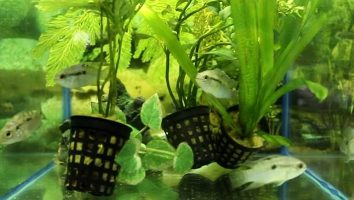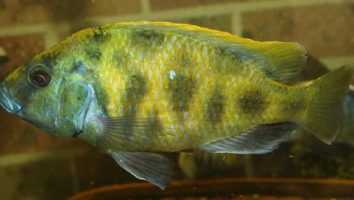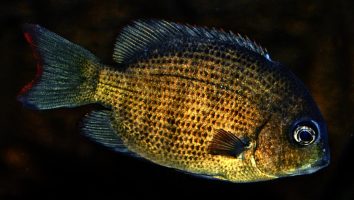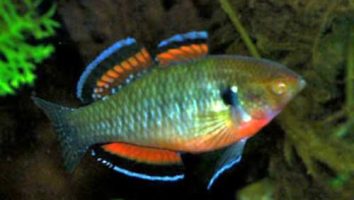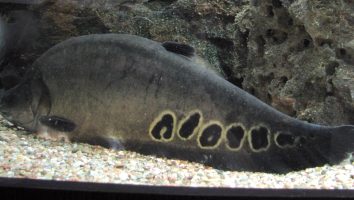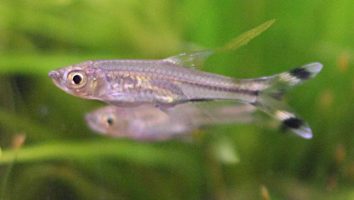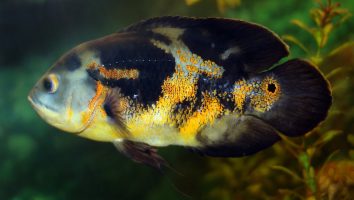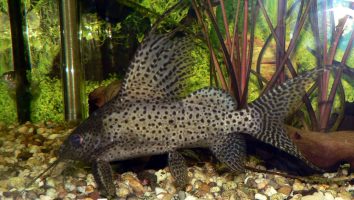The red piranha is one of the most popular and well-known fish in the aquarium trade. They’re also one of the most controversial.
Piranhas have a reputation for being aggressive and dangerous, but that’s not always the case. In fact, they can make great pets!
Of course, you need to know what you’re doing before you bring one home. That’s where this guide comes in.
We’ll teach you everything you need to know about red piranha care. From tank size and diet, to tank mates and common problems.
Table of contents
Species overview
The red piranha (scientific name: Pygocentrus nattereri) is one of the most well-known and popular species of piranha. They are found throughout a large portion of South America and are a common sight in the Amazon River basin.
These fish are known for being aggressive and voracious predators. They will eat just about anything they can fit in their mouths, including other fish, crustaceans, and even mammals.
Due to their reputation, red piranhas are often considered to be one of the most dangerous fish in the world. However, attacks on humans are actually quite rare and most of the time these fish will leave people alone.
If you’re thinking about keeping piranhas as pets, the red piranha is definitely not the right choice. They are much better suited for life in the wild where they can be left to their own devices.
Appearance
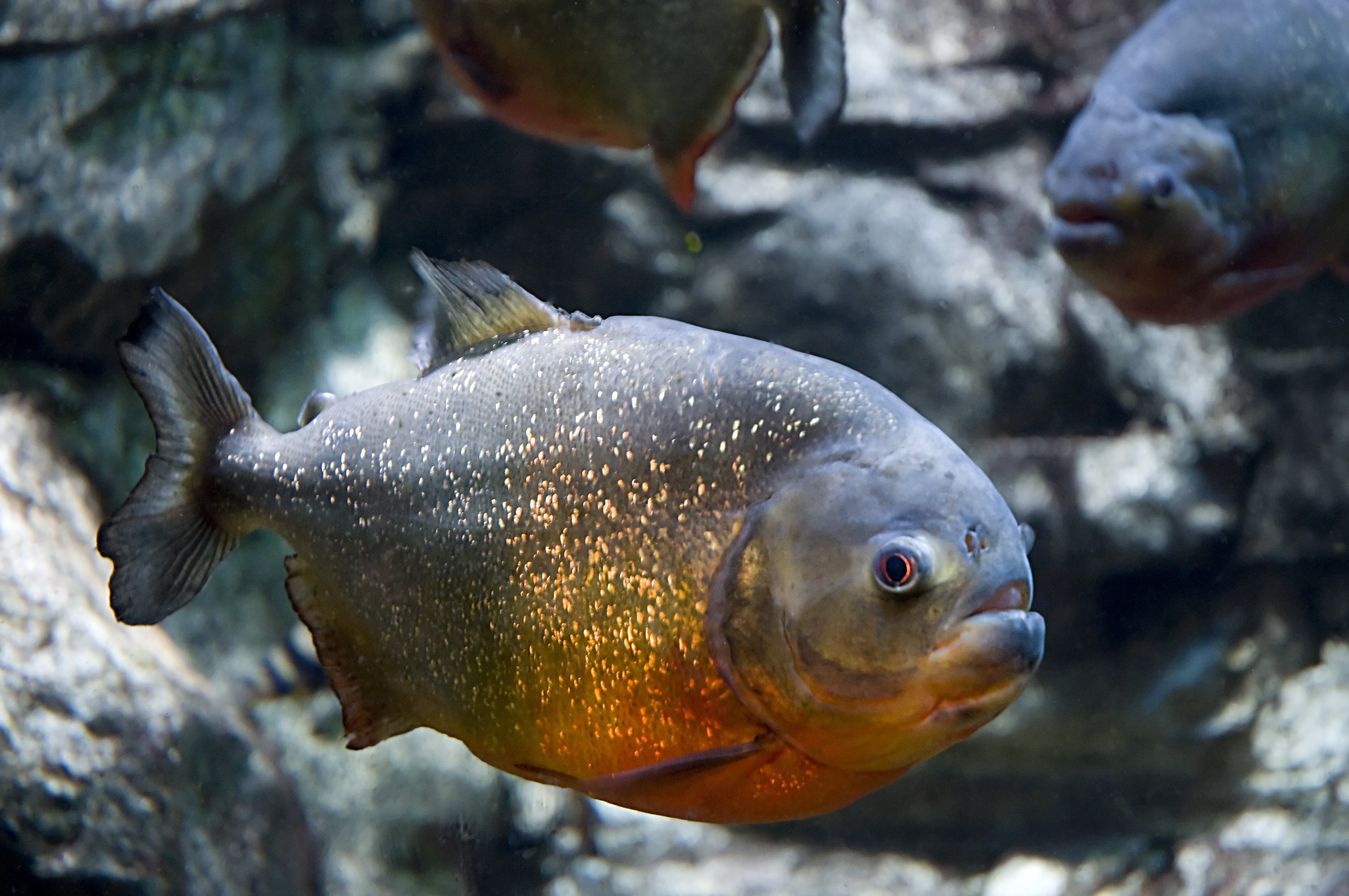
The first thing you’ll notice about this fish is their wicked set of razor sharp teeth. These teeth are so razor sharp that they can actually slice through flesh with ease.
Their bodies are long and thin with a sleek design that helps them move through the water quickly and with ease. The vast majority of their body is a deep red color.
The fins on this fish are also a deep red color. The dorsal fin is slightly taller than the anal fin and both of these fins are located towards the back end of the fish.
The caudal fin is forked and symmetrical. The pectoral fins are located towards the front of the body and are used for steering and maneuvering.
The pelvic fins are located towards the back of the body and are used for stabilization.
Lifespan
In the wild, the average red piranha lifespan is around 10 years. But in captivity, they only live for about 5 years.
This is due to a number of factors. For one, red piranhas are very sensitive to water quality. They also have a very high metabolism, which means they need a lot of food.
If either of these things isn’t up to par, it can shorten their lifespan significantly.
Size
The average size for a Red Piranha is about 12 inches, with some reaching up to 18 inches. As one of the larger aquarium fish, you’ll need to provide them with plenty of space to swim and hide. A tank of at least 50 gallons is recommended for a single fish, and 100 gallons for a pair.
Tank
Tank Size
The minimum tank size for red piranhas is 100 gallons. If you want to keep more than one fish, you should add at least 50 gallons for each additional fish.
It’s important to remember that these fish grow quickly and will reach their full size in just a few short years. It’s best to start with a larger tank so you don’t have to upgrade as they grow.
Water Parameters
Piranhas are one of the most misunderstood fish in the aquarium trade. Thanks to their reputation as man-eating predators, many people believe they’re impossible to keep in captivity.
The reality is that piranhas are just like any other fish when it comes to their water parameters. They need specific conditions to stay healthy and thrive.
One of the most important things to remember when it comes to piranha care is that these fish are very sensitive to changes in their environment. Even a small deviation from their preferred water parameters can cause stress and health problems.
That’s why it’s so important to test the water frequently and make changes as needed. It’s also why you should only add piranhas to an established aquarium.
Here are a few water parameters to keep in mind when setting up a piranha tank.
- Water temperature: 75 to 86 degrees Fahrenheit
- pH levels: 6.5 to 7.5
- Water hardness: 2 to 12 dGH
- Alkalinity Levels: 4-8 dKH
What To Put In Their Tank
As you might expect, these fish are going to need a pretty big tank. If you want to keep more than one then you’ll need an even larger aquarium.
The minimum size tank we would recommend for a single red piranha is 75 gallons. If you want to keep a few of them together then something in the 125-gallon range would be better.
When it comes to setting up the inside of their tank you have a few options.
You can go with a standard gravel substrate, but we prefer something a little softer. These fish love to dig and a softer substrate will be easier on their fins.
You can also add some plants to their habitat as well. Leopard Plecos are known to nibble on vegetation so you’ll want something that can bounce back (Hornwort, Water Wisteria, or Java Moss are all great choices). Don’t feel obligated to go with a heavily planted tank for this species though.
As for other decorations, it’s really up to you. These fish are pretty active so they’ll appreciate some room to swim. Add some rocks or driftwood if you want, but don’t go overboard.
One final note, these fish are known to be jumpers so make sure you have a tight fitting lid on their tank!
Common Diseases
Red piranhas are pretty hearty fish, but that doesn’t mean they’re immune to disease. As with any other animal, there are a number of things that can go wrong and make your fish sick.
The most common disease that affects red piranhas is something called “hole-in-the-head”. This is caused by poor water quality and the presence of activated carbon in the tank.
It manifests itself as one or two pits/holes in the skin of your fish’s head. While it’s almost always curable (fixing your water quality and removing activated carbon is usually all you need to do), it will usually leave some scarring on your poor fish!
Other than that, the most common illnesses that affect red piranhas are the usual suspects. Things like ich, bacterial infections, and parasites are all potential problems.
As always, the best way to prevent your fish from getting sick is to maintain a clean and stable tank. This will help to keep the water quality high and will also make it less likely that your fish will be affected by disease.
Behavior & Temperament
The red piranha is one of the most aggressive and dangerous fish in the world. In the wild, these fish have been known to attack and kill larger animals, including humans.
In captivity, red piranhas are still aggressive, but they are not usually a danger to humans. They are, however, a danger to other fish in the tank. These fish are carnivores and will eat anything they can fit in their mouths. This includes other fish, small mammals, and reptiles.
It is important to make sure that the tank is large enough for the red piranha to swim around and that there are no small hiding places for other fish to hide in. These fish are also known to be jumpers, so the tank should have a lid that is secure.
Red piranhas are not recommended for beginners or for people who do not have experience keeping aggressive fish.
Tank Mates
The red piranha is a predatory fish, which means that it will eat just about anything that it can fit in its mouth.
For this reason, it’s important to be very careful when choosing tank mates for this species. You’ll need to find fish that are too large to be eaten and that can also handle the same water conditions.
Some compatible fish include:
- Pacu
- Arowana
- Oscar
- Convict Cichlid
- Jack Dempsey
- Green Terror
- Firemouth Cichlid
It’s also important to note that red piranhas are schooling fish. This means that they do best when kept in groups. A school of six is a good number to start with.
Breeding
Red piranha are one of the most difficult fish to breed in captivity. They are very aggressive and need to be kept in large groups. They also require very specific water conditions.
The first step is to set up a large tank. It should be at least 200 gallons. The water should be warm (around 80 degrees Fahrenheit) and well-oxygenated. The pH should be between 6.5 and 7.5.
Next, you need to add a lot of hiding places. Use rocks, caves, and plants to create a complex environment. This will help to reduce aggression.
When the tank is set up, add a group of red piranha. It’s best to add more females than males. You can sex them by looking for the smaller fish with the brighter colors.
Once the fish are in the tank, you need to feed them a lot. They are carnivores and need a diet that is high in protein. Offer them live food as well as frozen or freeze-dried foods.
After a few months, the fish should be ready to breed. The males will start to build nests out of plants and rocks. The female will then lay her eggs in the nest.
The male will guard the eggs until they hatch. Once the fry are free-swimming, you can remove the adults and start feeding them baby brine shrimp.
Conclusion
Red piranha care can be challenging, but it is possible to successfully keep these fish as pets. They are relatively easy to care for as long as you provide them with a large tank, plenty of hiding places, and a diet of live or frozen fish. These fish can also be aggressive, so it is important to choose tank mates carefully. With proper care, red piranhas can make interesting and enjoyable pets.

